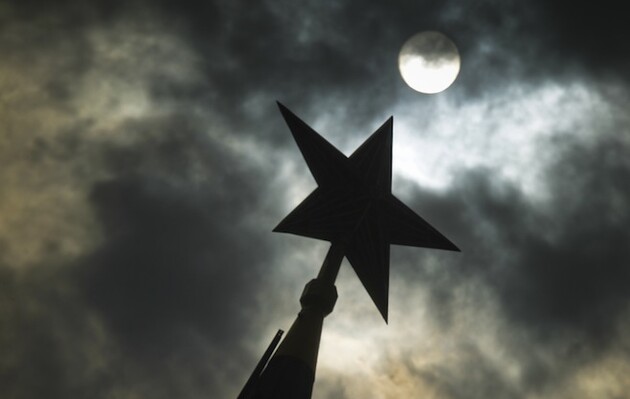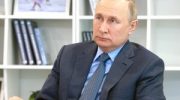Dreams of a quick capture of Ukrainian cities have not come true, so that after heavy losses, Moscow may readjust to a protracted war.

After plans “A” and “B” of the Russian invasion of Ukraine failed, Russia is forced to change its plan “B” due to military defeats. Former Austrian General Mick Ryan predicts that the war will turn into a “long-term campaign”. But what will all these Russian tactical changes really mean?
According to Focus , after the site of hostilities on Ukrainian territory, the Russian command announced positive results despite all reports of heavy losses in the Russian army.
“In general, the main tasks of the first stage of the operation have been completed,” said Sergei Rudskaya, First Deputy Chief of the General Staff of the Russian Armed Forces.
He added that after the “completion of the main offensive”, efforts will now be focused on the main goal of Russian aggression, namely the “liberation” of Donbass. But according to former Australian Army General Mick Ryan, these tactical changes are just an expanded Plan B.
Plan A failed in the first 48 hours after the start of a full-scale war against Ukraine. In fact, Russia wanted to use its light and air forces in hopes of capturing Kyiv and other important points, as well as arresting President Vladimir Zelensky, Prime Minister Denis Shmygal and other members of the government. Russia hoped that it would be able to force Ukraine to surrender and seek a political solution.
But Plan A failed as follows: Russia was forced to change tactics very quickly due to strong resistance from the Ukrainian Armed Forces and the weakness of the Russian army.
That's how Plan B came about. He envisioned an increase in air strikes, the destruction of small towns and the intensifying shelling of civilian infrastructure.
“Plan B assumed that the Russian Air Force would finally prove itself,” Ryan said.
But Moscow actually had only ground forces at its disposal, drawn to Ukraine's borders before the invasion. These troops threw into battle “without any general coordination.” They began to advance randomly from the north, east and south. And the Russian command hoped that this mess would somehow bring “victory.” Obviously, there was no single command center in charge of the entire operation. So Moscow had to coordinate with several generals on the ground.
So Plan B failed like this: as soon as such a large army ran out of fuel, ammunition and food, it immediately lost its military advantage. Russia has suffered heavy losses. On Friday in Moscow it was announced that he had died on the battlefield in 1351. Another 3,825 soldiers were wounded. Ukraine, on the other hand, says 16,000 Russian servicemen have been killed. And this is a much larger figure than what Russia calls. US intelligence has counted about 7,000 deaths among the Russian military. NATO says the Russian army has lost 40,000 soldiers, including dead, wounded or missing.
“Russia has sacrificed so many lives for minor territorial conquests,” Ryan said.
Therefore, Moscow switched to Plan B about a week ago, which made the war even more brutal. Cities such as Kharkiv, Mariupol and Chernihiv are firing from a great distance, completely destroying infrastructure. But the original plan “B” also failed. The Ukrainian army did not give up. She continued to ambush logistics convoys, leading to a shortage of soldiers and a loss of satisfaction. The Russian army is too slow, exhausted and unsuccessful. She did not achieve her goals. Russia is desperately trying to “capture Mariupol to pass it off as a victory.” The battle for the city continues.
“Obviously, they overestimated their ability to take Kyiv. In truth, they overestimated their ability to occupy any densely populated center. No one was ready for the Ukrainian resistance,” the Pentagon said in a statement.
Now Putin needs a “modified” plan “B”. Western military experts say that the Russian army is reacting to the failure of the attack on Kyiv, Kharkov and Nikolaev. According to Ryan, Russia has already accepted that the war will not be short. Rudsky said that “the first stage is over.” However, he did not specify how many such stages there will be.
What can happen next? Ryan explains that Russia will have to mobilize personnel and the military industry to compensate for the loss of weapons, ammunition and equipment. In addition, it can focus on one front, redeploying combat-ready units and artillery to achieve greater tactical success. Given the strikes on the city of Dnipro, as well as some successes near Luhansk and Donetsk, this front is likely to be the east. There were also signs that the Russian Air Force increased the number of daily departures last week. Putin can remove the top-level military command to shift all the blame. At the same time, he will need a commander in chief for operations in Ukraine. According to Ryan, Russia is adapting at the cost of major military mistakes. And, most likely, it will move to a rethought long-term war.
See the special topic: Ukraine is not Russia: what will happen to Russian prisoners of war? How many and where are the Russian soldiers captured by the Ukrainians Chernihiv in an operational environment The city has no opportunity to arrange humanitarian corridors or take away the wounded. The Russian army has destroyed about 4,500 homes and nearly 400 educational institutions in Ukraine . The final calculation of the damage can be done after the cessation of hostilities. Russian servicemen who managed to escape from Ukraine are returning to fight – SBU No one in the Russian army is engaged in manning “newly formed” columns. Podoliak spoke about two processes that are currently developing in Russia . At the forefront there are either pure propagandists, or those who have already been written off and sent to a well-deserved retirement.




